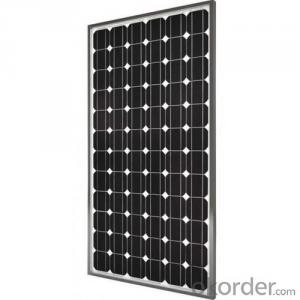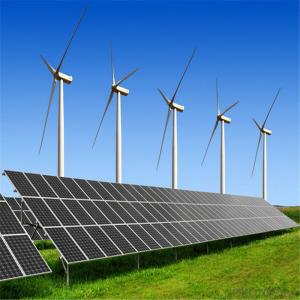Solar Solar Inverter
Solar Solar Inverter Related Searches
Best Solar Inverter For Home Best Inverter For Solar Micro Inverter For Solar Panel Solar Inverter Cost For Home Inverter For Home Solar Cover For Solar Inverter Solar Battery For Inverter Shade For Solar Inverter Wifi Dongle For Solar Inverter Wifi For Solar InverterHot Searches
Type Of Inverter For Solar Types Of Inverter For Solar Used Solar Inverter For Sale Inverter Size For Solar System Solar Edge Inverter For Sale 5kw Solar Inverter For Sale Solar Inverter For Sale Solar Inverter For Battery Solar Inverter For Split Ac Solar Inverter For Laptop Solar Inverter For Fridge Solar With Inverter Price Solar Inverter With 2 Battery Solar Inverter Price In China Best Solar Inverter In China Solar Inverter Price In Dubai Solar Inverter Price In Uae Solar Inverter Price In Kenya Solar Inverter Price In Kerala Solar Hot Water Collectors For SaleSolar Solar Inverter Supplier & Manufacturer from China
Okorder.com is a professional Solar Solar Inverter supplier & manufacturer, offers integrated one-stop services including real-time quoting and online cargo tracking. We are funded by CNBM Group, a Fortune 500 enterprise and the largest Solar Solar Inverter firm in China.Hot Products
FAQ
- The role of a communication interface in a solar inverter is to facilitate the exchange of information and data between the inverter and other devices or systems. It allows for monitoring, control, and communication with the solar inverter, enabling real-time performance monitoring, remote management, and integration with other renewable energy systems or smart grid networks.
- What is the difference between a PV inverter and a solar inverter?
- The main component of the inverter is the three-phase bridge converter. The main purpose of the grid-connected inverter is to change the power to DC and change the AC power. The main purpose is to improve the power quality (because the wind power generation is very large
- The role of a power limiter in a solar inverter system is to regulate the amount of power that is fed into the grid from the solar panels. Solar panels generate electricity based on the available sunlight, and at times, they may produce more power than what is needed or allowed by the grid. In such cases, a power limiter acts as a control mechanism to limit the amount of power that can be injected into the grid. It ensures that the power output from the solar panels remains within the specified limits, preventing overloading or destabilization of the grid. The power limiter continuously monitors the power output from the solar panels and adjusts it accordingly to match the grid requirements. It does this by intelligently controlling the inverter, which converts the direct current (DC) generated by the solar panels into alternating current (AC) suitable for grid integration. By limiting the power fed into the grid, a power limiter helps in maintaining grid stability, preventing voltage fluctuations, and minimizing the risk of power surges or blackouts. It also ensures compliance with local regulations and grid codes related to solar power generation. Additionally, a power limiter can provide additional functionalities such as grid synchronization, anti-islanding protection, and remote monitoring. These features enhance the safety, reliability, and overall performance of the solar inverter system. Overall, the presence of a power limiter in a solar inverter system is crucial for maintaining a balance between power generation and grid stability, optimizing the utilization of solar energy, and ensuring a safe and efficient integration of solar power into the electrical grid.
- Yes, a solar inverter can generally be used with different brands of solar panels as long as they have compatible specifications and operating voltages. However, it is important to consult the manufacturer's guidelines or seek professional advice to ensure compatibility and optimal performance.
- The maximum AC output current that a solar inverter can provide depends on its specifications and capacity. Different models and brands may have varying maximum AC output current ratings, typically ranging from a few amps to several hundred amps. It is important to consult the specific technical specifications of a particular solar inverter to determine its maximum AC output current capacity.
- Yes, a solar inverter can be used in regions with high levels of dust or debris. However, it is important to regularly clean and maintain the inverter to ensure optimal performance and prevent any damage caused by the accumulation of dust or debris.
- MPPT technology, or Maximum Power Point Tracking, is utilized in solar inverters to optimize the energy output of photovoltaic systems. It works by continuously tracking the maximum power point of the solar panel array, which is the voltage and current combination that allows the panels to generate the maximum power. The MPPT algorithm adjusts the operating voltage and current of the solar panels to match the optimal point, ensuring that the maximum amount of power is extracted from the solar array and converted efficiently by the inverter. By constantly adapting to changing environmental conditions, MPPT technology maximizes the solar energy harvest, improving system efficiency and overall performance.
- Choosing the right size solar inverter for a specific solar power system requires careful consideration of various factors. Here are some steps to help you make the right choice: 1. Determine your solar power system's capacity: Start by calculating the total capacity of your solar power system. This involves determining the total wattage of all your solar panels combined. This information can usually be found on the product specifications or by consulting with your solar panel manufacturer. 2. Consider your average energy consumption: Assess your average energy consumption to determine the size of the solar inverter needed to meet your requirements. Consider your peak power usage and any potential future increase in energy demands. 3. Evaluate the inverter's capacity: Match the capacity of the solar inverter with your solar power system's capacity. The inverter's capacity should be equal to or slightly higher than your system's total capacity to ensure optimal performance. 4. Consider the inverter's efficiency: Look for an inverter with high efficiency ratings. A higher efficiency rating means that it can convert a larger percentage of the solar energy into usable electricity, minimizing power losses. 5. Determine the inverter type: Decide on the type of solar inverter suitable for your system. There are three main types: string inverters, microinverters, and power optimizers. String inverters are the most common and cost-effective option for small to medium-sized systems, while microinverters and power optimizers are better suited for complex installations or systems with shading issues. 6. Assess the inverter's features: Consider additional features that the solar inverter may offer. Look for features such as monitoring capabilities, grid integration capabilities, and built-in safety features like arc fault protection or rapid shutdown. 7. Consult with professionals: If you are uncertain about the right size solar inverter for your specific solar power system, it is advisable to consult with a professional solar installer or an electrical engineer. They can help assess your energy needs, system requirements, and provide expert guidance on selecting the appropriate inverter size. Remember, choosing the right size solar inverter is crucial for the overall performance and efficiency of your solar power system. Taking the time to evaluate your system's requirements and seeking expert advice will help ensure you make an informed decision.















































